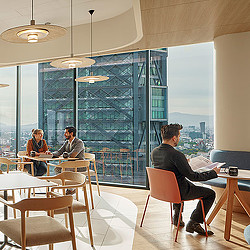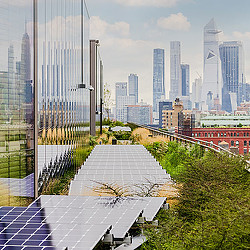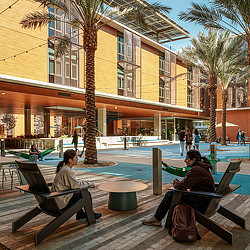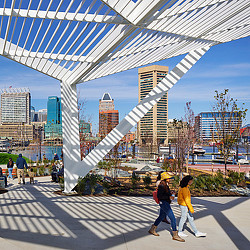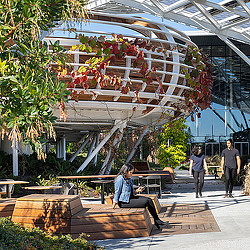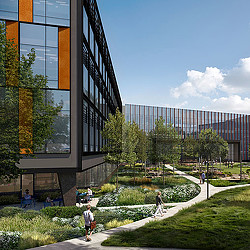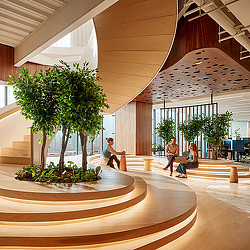An Innovative Solution to Confront Mexico City’s “Day Zero”
A visionary project seeks to redefine Mexico City’s relationship with water, offering a beacon of hope in the face of scarcity.
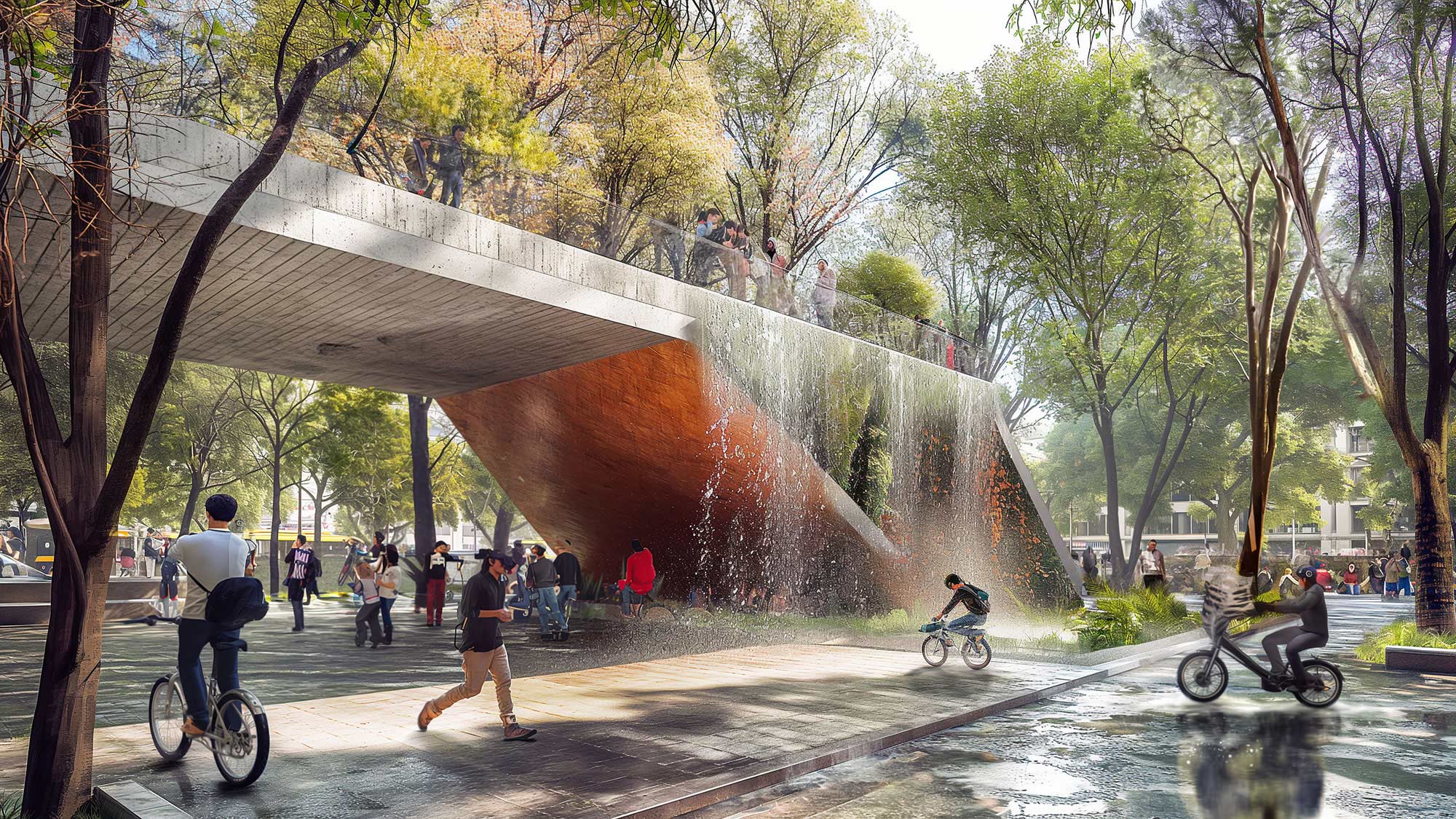
Mexico City is facing a severe water shortage, with some experts warning that the city could deplete its water supply within weeks if conditions don’t improve. With “day zero”— the day when water taps run dry for large portions of the city — looming, urgent action is imperative to address this impending catastrophe. Much like how buildings and infrastructure need to be fortified against the onslaught of climate change, Mexico City finds itself at the forefront of a different crisis — one of water scarcity and wastage.
Water, once the lifeblood of communities, has gradually lost its traditional significance in Mexico City. The city’s water crisis stems primarily from wastage, with a staggering 40% of available water in the network being lost — 300 liters per second wasted compared to 177 consumed.
But amid the dire situation lies an opportunity for innovation and transformation. A visionary project seeks to redefine Mexico City’s relationship with water, offering a beacon of hope in the face of scarcity. By harnessing the power of public space design, this initiative aims to achieve partial water-network independence, while benefiting both residents and infrastructure.
At its core, Gensler’s proposed concept, called “Volvamos a la Fuente” (loosely translated to “Let’s Return to the Source”), revolves around the installation of rainwater collection systems in strategic hubs across the city. These hubs serve not only as water resource centers but also as community connectors, offering additional services tailored to the specific needs of each area. From markets to urban gardens to parks, these hubs breathe new life into neighborhoods, fostering resilience and pride.
The key to success lies in simplicity, adaptability, and a steadfast commitment to change. By leveraging existing tools and technologies, the project seeks to align resources with the most affected areas, reducing waste and increasing water availability. Moreover, by integrating water-efficient design elements into public spaces, the initiative aims to confront water scarcity challenges head-on while promoting sustainable urban development.
But this is not just about addressing a crisis; it’s about reclaiming Mexico City’s waterways and revitalizing them as green, vibrant spaces for all to enjoy. With an annual rainfall averaging around 800 millimeters and humidity levels often exceeding 70%, Mexico City possesses ample opportunities to harness rainwater through small, adaptable interventions.
The success of this project hinges on collaboration and collective action. By bringing together a versatile core team across various disciplines and scales, backed by the firm’s resources and expertise, the vision of transforming Mexico City’s water landscape into one of resilience and abundance becomes a tangible reality.
As architects, designers, and citizens, we have a responsibility to confront the challenges of our time with creativity, innovation, and determination. The water crisis in Mexico City may seem insurmountable, but with concerted effort and unwavering resolve, we can turn the tide on water scarcity and pave the way for a brighter, more sustainable future — for Mexico City and beyond.
A panel of external jurors recently selected Volvamos a la Fuente as the winner of Gensler’s inaugural Innovation Challenge 2024, an internal competition focusing on innovations that address the challenges facing our cities. The jurors lauded the project, while initially focused on Mexico City, for its potential far-reaching impact on cities across the world also facing issues of water scarcity.
Water stress is a global reality, but together, we can create a future where water is abundant, accessible, and cherished. Let’s act now, not just for ourselves but for generations to come.
For media inquiries, email .
Una Solución Innovadora Para Enfrentar el “Día Cero” de la Ciudad de México
Un proyecto visionario busca redefinir la relación de la Ciudad de México con el agua, ofreciendo una esperanza frente a la escasez.

La Ciudad de México enfrenta una grave escasez de agua, con expertos advirtiendo que la ciudad podría agotar su suministro en semanas si las condiciones no mejoran. Con el “Día Cero” frente a nosotros— el día en que las llaves no tendrán más agua en grandes partes de la ciudad — es imperativo tomar medidas urgentes para abordar esta inminente catástrofe.
El agua, antes el motor de las comunidades, ha perdido gradualmente su importancia tradicional en la Ciudad de México. La crisis hídrica de la ciudad se debe principalmente al desperdicio, con un 40% del agua disponible en la red perdiéndose — 300 litros por segundo desperdiciados en comparación con los 177 consumidos.
Sin embargo, en medio de esta situación desesperada surge una oportunidad para la innovación y la transformación. Un proyecto visionario busca redefinir la relación de la Ciudad de México con el agua, ofreciendo una esperanza frente a la escasez. Aprovechando el poder del diseño del espacio público, esta iniciativa busca lograr una independencia parcial de la red de agua, beneficiando tanto a los residentes como a la infraestructura.
En su núcleo, el concepto propuesto por Gensler, llamado “Volvamos a la Fuente,” gira en torno a la instalación de sistemas de recolección de agua de lluvia en centros estratégicos de la ciudad. Estos centros sirven no solo como recursos hídricos, sino también como conectores comunitarios, ofreciendo servicios adicionales adaptados a las necesidades específicas de cada área. Desde mercados hasta jardines urbanos y parques, estos centros revitalizan los vecindarios, fomentando la resiliencia y el sentido de pertenencia.
La clave del éxito radica en la simplicidad, la adaptabilidad y un firme compromiso con el cambio. Al aprovechar las herramientas y tecnologías existentes, el proyecto busca alinear los recursos con las áreas más afectadas, reduciendo el desperdicio y aumentando la disponibilidad de agua. Además, al integrar elementos de diseño eficientes en el uso del agua en los espacios públicos, la iniciativa enfrenta los desafíos de la escasez de agua mientras promueve un desarrollo urbano sostenible.
Pero esto no se trata solo de abordar una crisis; se trata de reclamar los cursos de agua de la Ciudad de México y revitalizarlos como espacios verdes y vibrantes para que todos los disfruten. Con una precipitación anual promedio de alrededor de 800 milímetros y niveles de humedad que a menudo superan el 70%, la Ciudad de México tiene amplias oportunidades para aprovechar el agua de lluvia a través de pequeñas intervenciones adaptables.
El éxito de este proyecto depende de la colaboración y la acción colectiva. Al reunir un equipo central versátil a través de varias disciplinas y escalas, respaldado por los recursos y la experiencia de la firma, la visión de transformar el paisaje hídrico de la Ciudad de México en uno de resiliencia y abundancia se convierte en una realidad tangible.
Como arquitectos, diseñadores y ciudadanos, tenemos la responsabilidad de enfrentar los desafíos de nuestro tiempo con creatividad, innovación y determinación. La crisis hídrica en la Ciudad de México puede parecer insuperable, pero con un esfuerzo concertado y una resolución inquebrantable, podemos cambiar el rumbo de la escasez de agua y abrir el camino hacia un futuro más brillante y sostenible, tanto para la Ciudad de México como para más allá.
Un panel de jurados externos recientemente seleccionó “Volvamos a la Fuente” como el ganador del primer Desafío de Innovación 2024 de Gensler, una competencia interna que se centra en innovaciones que abordan los desafíos que enfrentan nuestras ciudades. Los jurados elogiaron el proyecto, inicialmente enfocado en la Ciudad de México, por su potente impacto de largo alcance en ciudades de todo el mundo que también enfrentan problemas de escasez de agua.
El estrés hídrico es una realidad global, pero juntos, podemos crear un futuro donde el agua sea abundante, accesible y apreciada. Actuemos ahora, no solo por nosotros mismos, sino por las generaciones futuras.











